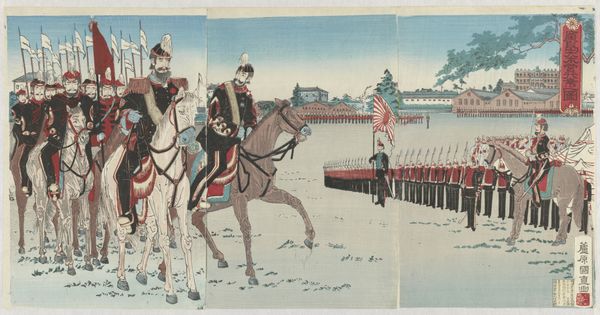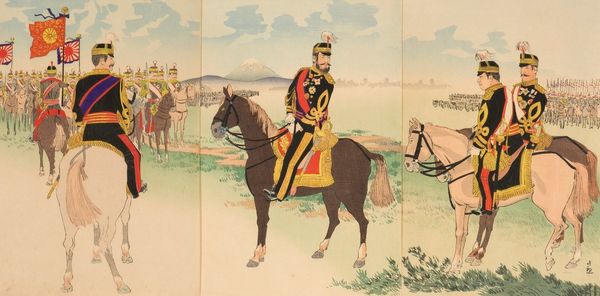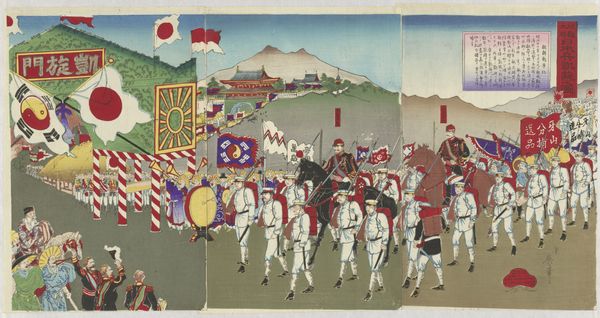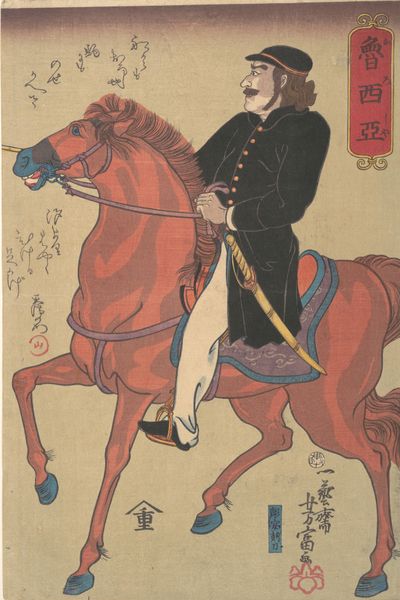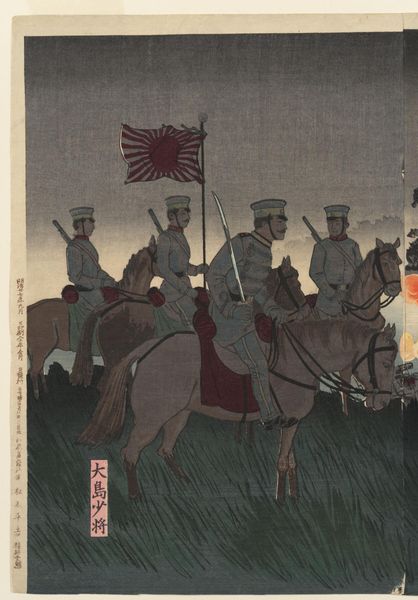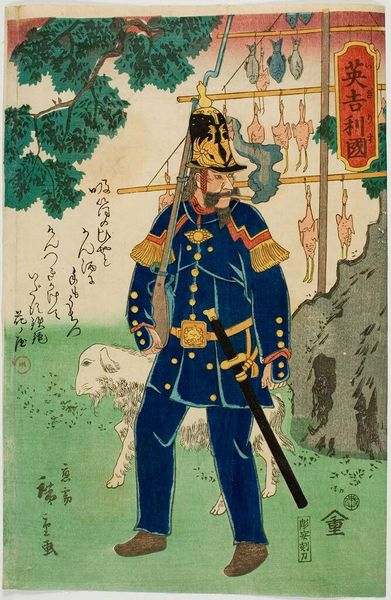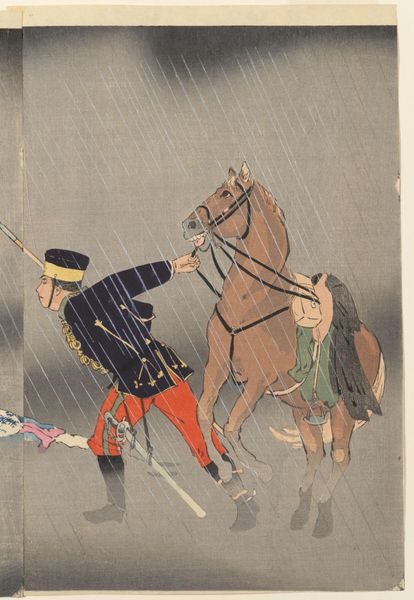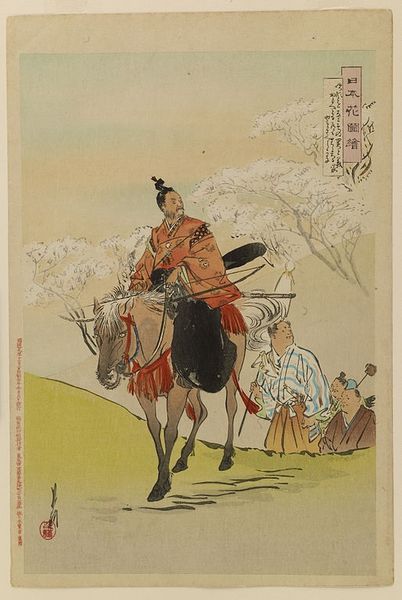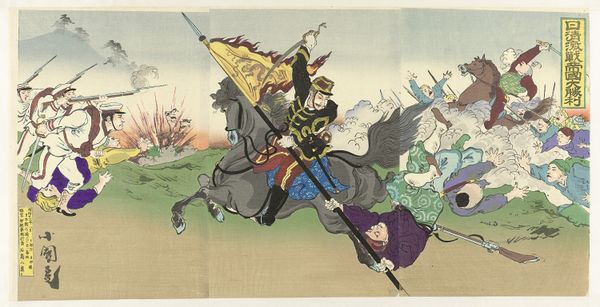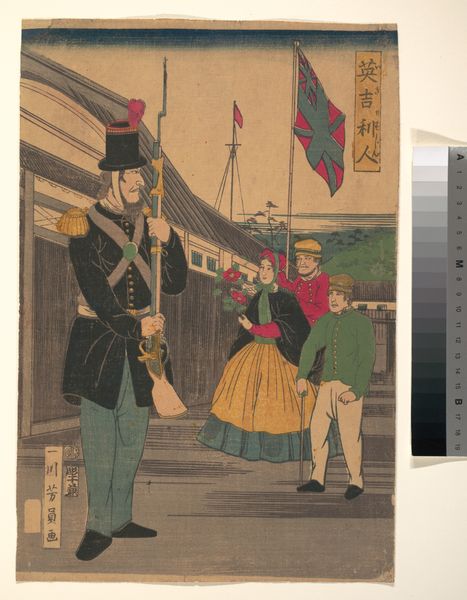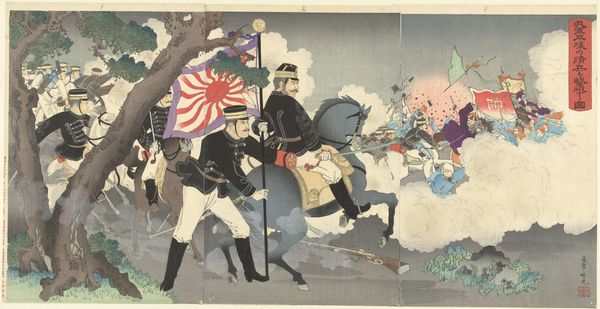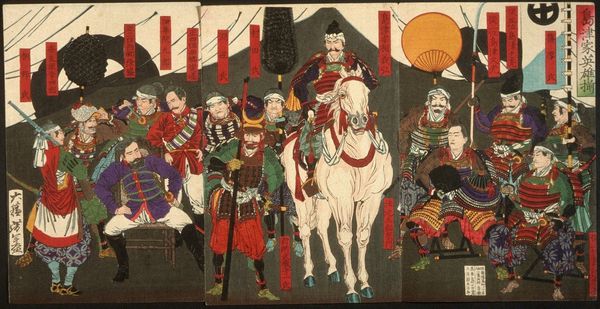
Dimensions: height 358 mm, width 233 mm
Copyright: Rijks Museum: Open Domain
Curator: Look at this interesting woodblock print. It’s titled “Grote ceremonie bij het Yasukuni heiligdom,” placing us squarely in late 19th century Japan, 1895 to be exact. The artist is Shinsai Kiyooki. It’s part of the Rijksmuseum collection. Editor: My first impression is one of formality and calculated display. The figures, mostly in uniform, seem almost regimented despite the somewhat gentle palette and ukiyo-e style. There is definitely a power dynamic present in this image, though perhaps muted by the medium. Curator: Yes, I think your reading aligns. Considering this image through the lens of Meiji era history, Yasukuni Shrine played a crucial role in state Shinto and the militarization of Japan. The image shows the emperor visiting this powerful symbol during a period of great changes. Editor: Precisely, and the choice of depicting the emperor on horseback, processing into the shrine underscores the symbolic relationship between military might and spiritual legitimacy. You can clearly see Japanese flags among other decorations, so the event serves to connect the modern army with traditional beliefs, projecting an image of strength. The fact that this event, taking place during Japan's ascendance to a modern nation state, and honoring the war dead, suggests an active attempt at legitimization and mobilization through art and propaganda. Curator: It’s an interesting application of Ukiyo-e tradition, generally associated with landscapes and popular culture, used here for history painting and implicitly, imperial propaganda. The use of printmaking makes the image easily reproducible and distributable for wide circulation to further this projection of power. Editor: The image almost invites us to consider it as an early form of political marketing. It evokes questions of nationhood and who is included or excluded within it. For whom, really, is this ceremony being performed? And at what cost to those outside the frame of this 'Great Ceremony'? I see not just ritual and authority here, but a carefully constructed national identity. Curator: This print encapsulates that complex intersection of tradition, militarism, and imperial authority at the cusp of modern Japan, raising pivotal questions about the shrine's lasting cultural and political roles. Editor: Reflecting on our discussion, I'm left contemplating the long shadow this moment casts – how symbols and images like these perpetuate narratives that continue to shape national consciousness today.
Comments
No comments
Be the first to comment and join the conversation on the ultimate creative platform.
